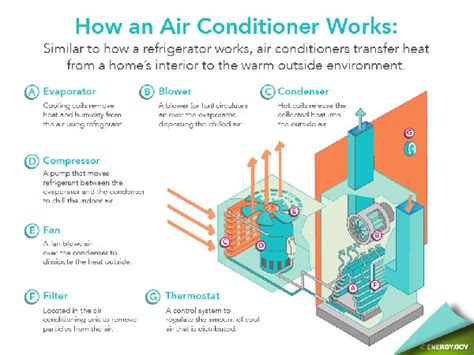
Can you envision life without air conditioning? Sweltering heat waves that can melt the rubber on your shoes, cook an egg on the dashboard of your vehicle, and make it almost difficult to have a good night's rest-- sounds unpleasant!
Let's face it, life without A/C would not be the very same. Did you understand, that before the 20th century, ice was in fact gathered for refrigeration? It was cut into 1-ton blocks, delivered throughout the country and used in 'ice-boxes' to keep food fresh. Fortunately today, refrigeration has been significantly improved given that its introduction in 1834.
By understanding how your house's A/C system works, you'll be able to make it run much better and longer, and if it needs to break during the dog days of summer, more confident discovering a replacement.
What is Central Air?
Considering that the 1960s, central air systems have been the most typical design of cooling in America.
Finest defined by the condenser system outdoors and ducts carrying cool air throughout the house, a central air conditioning is in some cases referred to as a "split-system" due to the fact that the indoor and outside parts are separated.
How It Functions
Comparable to how a sponge soaks up water, central air conditioning conditioners soak up the heat from inside the house and eject it outside through a process called "the refrigeration cycle."
It's easy to comprehend how an air conditioning system works when you see how the parts operate together.
Parts of a Cooling System
Split into 2 parts; a system will consist of an outdoor condenser system (below) and a coil housed on top of the furnace or inside air handler. The outside condenser, which does many of the work, operates in tandem with the air handler/furnace that disperses the conditioned air https://ac-repair-mississauga.ca into spaces of your home.
The Refrigeration Cycle
The cooling procedure starts when the thermostat finds the interior temperature has increased above the setpoint. It signals the control panel in the air handler and enters into action.
1) The internal blower draws in the hot, moist indoor air from the return ducts into the air handler/furnace cabinet to be conditioned.
2) Dirty air entering the cabinet initially goes through an air filter that traps dirt and particles.
3) The tidy air then goes through the evaporator coil. Utilizing metal fins to increase its area, the evaporator coil extracts heat and wetness from the warm air as the air travels through it. The clean, cool air is flowed throughout the home.
4) A set of copper tubes containing refrigerant, called a Line Set, connect the indoor coil with the outside condenser.
5) The condenser dissipates the heat caught inside the line originating from the evaporator coil by cycling it through its coils where a fan at the leading pushes air to speed up the procedure. The refrigerant is then compressed and travels back to the indoor evaporator coil, where the cooling procedure continues.
HEATING AND COOLING Cheat Sheet
It's a good idea to acquaint yourself with the technical language utilized by A/C experts to comprehend your system when it comes to making repair work or buying a brand-new unit.
A/C - Stands for heating, ventilation, and air conditioning. This acronym is used to categorize all devices utilized to regulate air temperature level, humidity, and air quality.
Split-System - In referral to parts of the system running both inside your home and outdoors. In a split system, the condensing unit is discovered outside.
BTU - British Thermal Units - a measurement of how much heat energy can be gotten rid of from the air in an hour.
Ton - A measurement that refers to the cooling capacity your unit can supply under typical conditions. 1 Ton amounts to approximately 12,000 BTU's. Heaps are often used when sizing a system for your house, which can be figured out based on the square video footage needed to be cooled or warmed.
Unrivaled Expertise
Conveniently, the heating system, cooling, and electrical systems all work automatically, without us needing to fumble around in the basement or worse, a hot attic. Up until something fails.
Understanding your cooling system may appear frustrating at first, however once you have the essentials down, you'll have the ability to understand not just how your system works, but also figure out lingo to make purchasing a replacement simple.